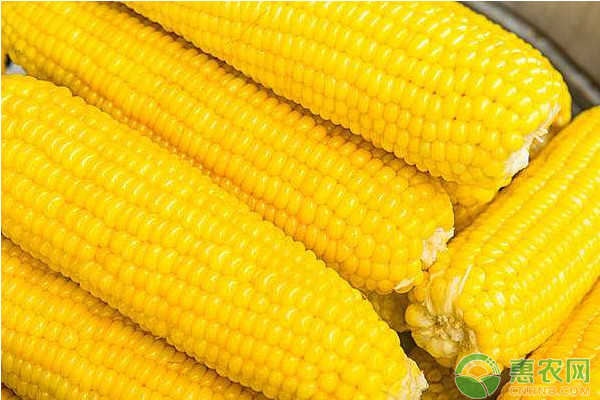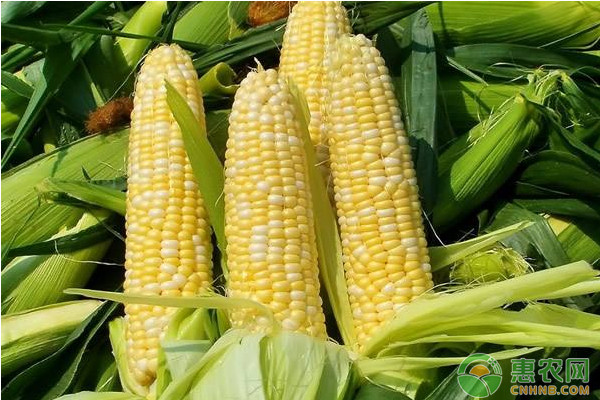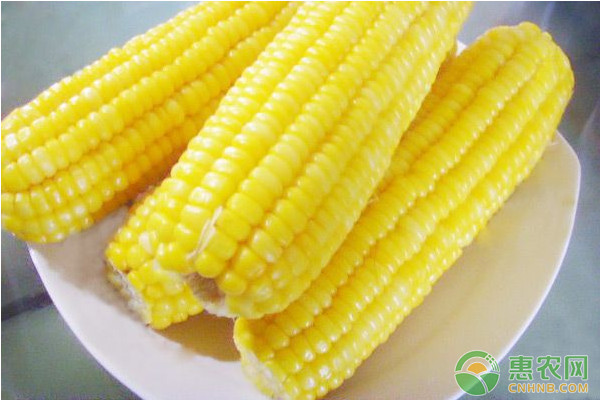Generally speaking, farmers who have planted food crops definitely want high yields of their own crops, and the following is a summary of the high-yield and high-efficiency cultivation techniques of corn. The friends in need must not miss it.

1 Analysis of the status quo of corn planting
(1) In the current corn planting, the main varieties are not very prominent, so the area of ​​the varieties promoted is small. In the current corn planting, there are many varieties, such as Shen Yu, Daiyu, Dongdan series, Hong Kong and other series, and the planting area is also very different.
(2) The unsuitable sowing period during corn planting leads to early sowing.
If the planting is too early in corn planting, because the ground temperature is relatively low in early sowing, the corn will appear to be slow to germinate, and it is easy to be powdered and badly seeded, which in turn leads to lack of seedlings and broken smut. Moreover, in the late stage of childbirth, it is easy to get sick, premature aging and lodging, and eventually lead to a reduction in corn production.
(3) There is a situation of excessive density in corn planting. If the density of planting is arbitrarily expanded during planting, if the number of sowing plants per 667m exceeds 2,600, it will cause the field to be closed, the ventilation between the corn plants will be poor, and the growth and development of the individual plants will be poor, and the photosynthesis of the leaves will appear. The weakening eventually affects the manufacture, transportation and accumulation of organic matter to a large extent, resulting in more empty stalks, less spikes, less particles, and less weight, which ultimately leads to a decrease in corn yield.
(4) Unreasonable fertilization in corn planting. Fertilization was not carried out according to the fertility required to combine the growth of the corn. Usually, during the growth of corn, the required fertilizer is mainly NPK. However, in the actual corn planting and cultivation process, because the soil is not combined with the actual situation of planting, some corn plants will find higher levels of soil organic matter, but the nitrogen, phosphorus and potassium content is less, and some farmers are in the process of planting. Without paying attention to the fertility problem, the fertility of the last corn planting area showed a very significant decline. In addition, there is no fertilization operation based on the type of compound fertilizer. Different types of fertilizers have different elements, and their fertility levels are also very different. In addition to this, there is a fertilization situation in the corn planting process.

(5) Improper pest control measures in corn planting, and some even do not control pests and diseases. During the corn planting process, smut is the most important pest and disease, and the damage is mainly caused by less fruiting and easy to cause empty rods. The main pests are corn pupa, which eats corn heart leaves, stems and ears. In general, the average year will result in crop yield reduction of 5% to 10%. If it is more serious, it will reduce production by more than 20%. Because the damage of corn borer is not very obvious outside the corn, it is not easy to be discovered and valued, and eventually it causes great damage to corn borer. Therefore, this insect pest is also called “dumb disasterâ€. In addition, due to the different degree of planting, improper use of herbicides, coupled with the relatively inconspicuous management methods, and ultimately the adverse effects, leading to problems in corn production, so ensure their production Quality, the following cultivation techniques must be mastered.
2 Key points of high-yield and high-efficiency cultivation techniques for maize
(1) Seeding is carried out after land selection. Different from the general crops, corn needs more oxygen during its growth process, and it is also suitable for warming. It is very afraid of waterlogging during the growth process because the soil is too poor or too viscous, or the soil is acidic. It will lead to extremely poor growth and development of corn. Therefore, when selecting the land before planting, it is necessary to ensure that irrigation is convenient, and it is also convenient to manage the field. Generally speaking, sandy loam soil and soil with a p H value between 6.5 and 7 and a fertility medium or above are most suitable.
(2) Carry out soil preparation and application of base fertilizer. Well, it can create a good growth environment for the growth of corn seedlings. After selecting the land, it is necessary to deep-plow the ground and then level the ground. It is usually necessary to ensure that the cultivated layer is larger than 30 cm. The cultivated land must meet certain quality standards. , need to ensure high fertility, fine soil and flat. After the whole ground is completed, the line of defense is ditched. In order to ensure that the irrigation work in the late stage of corn planting is convenient, it is also necessary to open trenches, repair the ditch, and ensure that the ditch and the ditch are connected and the irrigation is smooth.
(3) Seed treatment and seeding.
1 The selected corn varieties must ensure quality clearance. Generally, it is mainly to select local corn varieties. Generally speaking, corn varieties have strong disease resistance and lodging resistance, which can achieve high yield and stability.
2 Treat the seeds. Before planting, it is necessary to shoot for 3~4 hours. Usually, it is mainly soaked with warm water of 50~55°C for 10~15min, then cooled, then soaked for 6~8h, finally make Yongqing water It can be sown once or twice.
3 Determination of seeding specifications. In corn cultivation, in order to increase its production, it is necessary to strengthen the use of geography and light energy. In the process of corn growth, the larger the leaf area, the higher the utilization rate of light energy, so it can also ensure the higher the yield. The planting density of corn should be considered from various factors such as cultivation conditions, soil fertility and variety characteristics.

(4) Implement a scientific and rational field management method
1 Water and fertilizer management: When 5~6 leaves are used, the first time to apply seedling fertilizer, apply 7.5~10kg of urea per 667m. In the case of corn, there is a shortage of water in the seedling stage, and it is necessary to carry out the irrigation operation immediately, and it is more suitable for the method of furrow irrigation. In the rainy environment, or when the soil is relatively humid and there is more water in the ground, it is necessary to improve the ventilation conditions of the soil.
2 weeding. The spraying of the herbicide spray should be carried out in a weather that is sunny and windless. If the grievances are poor, there are many weeds in the field. If herbicides induce corn tillers, the tillers need to be cleaned up. If they are not cleaned, they will hinder the development of the main stems, which will eventually result in the cultivation of corn.
3 Conclusion
In short, in the process of corn planting and cultivation, it is a relatively complicated project to achieve a high-yield and high-efficiency cultivation mode. In this process, disturbances of many reasons are considered, especially different growth periods and planting areas. , will cause some interference to it. Therefore, in order to achieve high-yield cultivation of corn, it is necessary to combine the cultivation of specific conditions, step-by-step cultivation, and finally achieve high-yield cultivation of corn.
Polysaccharide is a glycosidic bond bonded sugar chain, at least more than 10 monosaccharides composed of polymerized sugar polymer carbohydrates, can be used in the general formula (C6H10O5) n said. Polysaccharides composed of the same monosaccharides known as homopolysaccharides, such as starch, cellulose and glycogen; polysaccharides composed of different monosaccharides known as heteropolysaccharides, such as gum arabic is composed of pentose and galactose. Polysaccharide is not a pure chemical substance, but a mixture of substances with different degrees of polymerization. Polysaccharides are generally insoluble in water, have no sweet taste, cannot form crystals, and have no reducibility or change of spin. Polysaccharides are also glycosides, so they can be hydrolyzed, and in the process of hydrolysis, they tend to produce a series of intermediate products, and eventually completely hydrolyzed to obtain monosaccharides.
Edible mushroom polysaccharide;Wolfberry polysaccharide;Jujube polysaccharide
Shaanxi Zhongyi Kangjian Biotechnology Co.,Ltd , https://www.zyplantextract.com